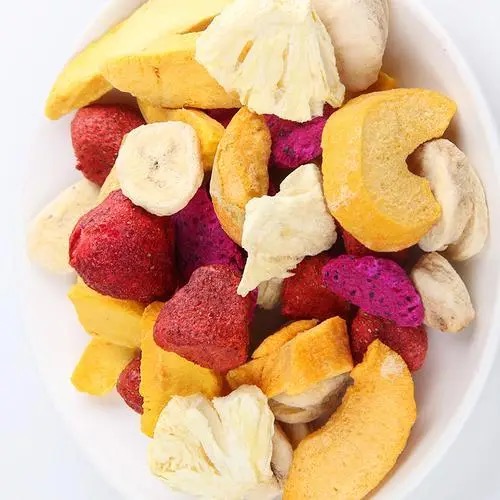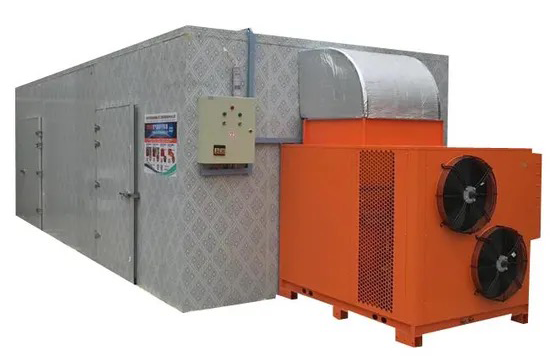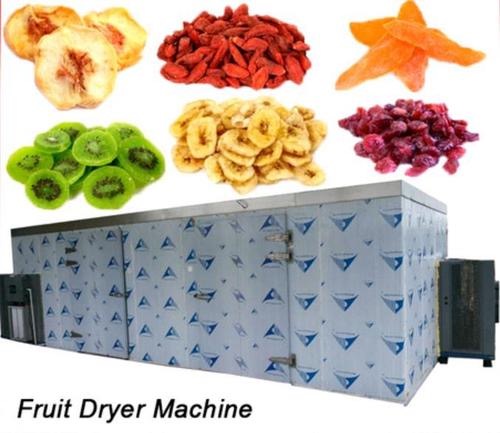
Content Menu
● What is a Food Dehydrator?
● Benefits of Using a Food Dehydrator
● Choosing Your Fruits
● Preparation Steps
● Setting Up Your Food Dehydrator
● Monitoring the Drying Process
● Storing Dehydrated Fruit
● Creative Uses for Dried Fruits
● Tips for Successful Dehydration
● Common Mistakes to Avoid
● Additional Details on Specific Fruits
>> Apples
>> Bananas
>> Strawberries
>> Mangoes
>> Pineapples
● Storage Techniques
● Conclusion
● FAQ
>> 1. What types of fruits are best for dehydrating?
>> 2. Do I need to peel my fruits before dehydrating?
>> 3. How do I prevent my fruit from browning?
>> 4. Can I dehydrate frozen fruit?
>> 5. How can I tell when my dried fruit is done?
● Citations:
Using a food dehydrator to dry fruit is a fantastic way to preserve the flavor and nutrition of your favorite fruits. Dehydrated fruits make excellent snacks, additions to meals, and can even be used in baking. This guide will walk you through the entire process of using a food dehydrator for fruit, covering everything from preparation to storage.

What is a Food Dehydrator?
A food dehydrator is an electrical appliance that removes moisture from food to aid in preservation. By lowering the water content, it inhibits the growth of bacteria, yeast, and molds, allowing you to store food longer without refrigeration. Dehydrators work by circulating warm air around the food, drying it evenly.
Benefits of Using a Food Dehydrator
- Preservation: Extends the shelf life of fruits.
- Nutritional Value: Retains most vitamins and minerals.
- Convenience: Provides healthy snacks that are easy to store and transport.
- Flavor Enhancement: Concentrates the natural sweetness and flavors of fruits.
Choosing Your Fruits
When selecting fruits for dehydration, consider the following options:
- Apples
- Bananas
- Strawberries
- Mangoes
- Pineapples
- Peaches
- Pears
Each fruit has its unique drying time and preparation method, which will be discussed later.
Preparation Steps
1. Wash Your Fruits: Rinse all fruits thoroughly under cold water to remove dirt and pesticides.
2. Peeling (if necessary): Some fruits like apples and pears can be peeled for better texture, while citrus fruits retain their peel for added flavor.
3. Cutting: Slice fruits into uniform pieces (about 1/4 inch thick) to ensure even drying. Thinner slices will dry faster.
4. Pretreatment (optional): To prevent browning and enhance flavor, soak sliced fruits in a solution of lemon juice and water (1 part lemon juice to 3 parts water) for about 5 minutes before drying. This step helps guarantee optimal results when dehydrating fruit at home.
Setting Up Your Food Dehydrator
1. Arrange Fruit on Trays: Place the prepared fruit slices in a single layer on the dehydrator trays. Avoid overlapping pieces to ensure proper air circulation.
2. Temperature Settings: Most fruits dehydrate well at temperatures between 135°F to 145°F (57°C to 63°C). Refer to your dehydrator's manual for specific temperature settings.
3. Drying Time: The drying time varies by fruit type and thickness but generally falls within these ranges:
- Apples: 6-8 hours
- Bananas: 8-12 hours
- Strawberries: 6-10 hours
- Mangoes: 10-15 hours
- Pineapples: 12-20 hours
4. Rotate Trays: For even drying, rotate trays halfway through the process if your dehydrator does not have a fan that circulates air evenly.

Monitoring the Drying Process
Check your fruit periodically as it dries. The fruit is done when it is leathery but not sticky; you should not be able to squeeze out moisture when you cut a piece in half.
Storing Dehydrated Fruit
Once dried, allow the fruit to cool completely before storing it. Use airtight containers or vacuum-sealed bags to keep moisture out. Store in a cool, dark place; properly dried and stored fruit can last up to one year.
Creative Uses for Dried Fruits
Dried fruits can be used in various ways:
- Snack on them directly.
- Add them to trail mixes.
- Incorporate into baked goods like muffins or breads.
- Rehydrate them for use in sauces or desserts.
Tips for Successful Dehydration
To maximize your success with dehydrating fruits, consider these additional tips:
- Use Fresh Produce: Start with fresh, ripe fruits that are free from blemishes or overripe spots. The quality of your fresh produce directly affects the outcome of your dried fruits[1][2].
- Uniform Slicing: Ensure that all pieces are sliced uniformly; this ensures even drying and prevents some pieces from being over-dried while others remain moist[3][4].
- Avoid Overloading: Do not overload your dehydrator trays; overcrowding can lead to uneven drying and extended drying times[5].
- Check for Doneness: As you near the end of the drying time, check your fruit frequently for doneness by cutting into a piece or squeezing it gently[6].
Common Mistakes to Avoid
While using a food dehydrator is straightforward, there are common pitfalls that can impact the quality of your dried fruit:
- Not Pretreating: Failing to pretreat fruits like apples or bananas can lead to undesirable browning due to oxidation[10].
- Incorrect Temperature Settings: Ensure you are using the correct temperature settings for different types of fruit; too high can scorch them while too low may not dry them effectively[2][9].
- Ignoring Humidity Levels: High humidity can affect drying times significantly; consider using a dehumidifier if you're in a particularly humid environment[8].
Additional Details on Specific Fruits
Apples
Apples are one of the most popular choices for dehydration due to their sweetness and versatility. When preparing apples:
1. Choose firm varieties like Fuji or Honeycrisp.
2. Slice them into rings or wedges.
3. Consider sprinkling cinnamon on them before dehydration for added flavor.
Dried apple slices make excellent snacks or can be rehydrated in oatmeal or baked goods.
Bananas
Bananas are another favorite due to their natural sweetness:
1. Slice bananas into uniform rounds.
2. To prevent browning, dip slices briefly in lemon juice.
3. For an extra treat, sprinkle with sugar or cinnamon before dehydration.
Dried bananas are perfect for trail mixes or as toppings on cereals.
Strawberries
Strawberries require careful handling due to their delicate nature:
1. Remove stems and slice strawberries into halves or quarters.
2. Soak briefly in lemon juice solution if desired.
3. Ensure they are spread out evenly on trays without overlapping.
Dried strawberries are delicious alone or added to granola mixes.
Mangoes
Mangoes provide tropical sweetness:
1. Peel mangoes carefully and slice them into thin strips.
2. Consider soaking in lime juice for flavor enhancement.
3. Arrange on trays ensuring they do not overlap.
Dried mango slices are delightful snacks or additions to smoothies.
Pineapples
Pineapples require more preparation due to their tough skin:
1. Remove skin thoroughly and core.
2. Cut into rings or chunks depending on preference.
3. Soaking in coconut water can add unique flavors before dehydration.
Dried pineapple is great as a snack or used in savory dishes like stir-fries.
Storage Techniques
Proper storage is crucial for maintaining freshness:
1. Use vacuum-sealed bags where possible; this removes air that causes oxidation.
2. Store dried fruits in cool dark places; consider refrigeration if storing long-term.
3. Label containers with dates so you can track freshness easily.
Conclusion
Using a food dehydrator for fruit is an enjoyable way to create healthy snacks while preserving the delicious flavors of seasonal produce. By following these steps—selecting the right fruits, preparing them properly, monitoring the drying process, and storing them correctly—you can enjoy homemade dried fruits all year round.

FAQ
1. What types of fruits are best for dehydrating?
Fruits like apples, bananas, strawberries, mangoes, and pineapples are excellent choices due to their natural sugars and textures that dry well.
2. Do I need to peel my fruits before dehydrating?
It depends on the fruit. For apples and pears, peeling is optional but can improve texture; citrus peels can enhance flavor if left on.
3. How do I prevent my fruit from browning?
Soaking sliced fruits in lemon juice mixed with water before drying helps prevent oxidation and browning.
4. Can I dehydrate frozen fruit?
Yes! However, it's recommended to thaw them first and pat them dry before placing them in the dehydrator.
5. How can I tell when my dried fruit is done?
Dried fruit should be leathery and pliable without any sticky spots; cutting a piece in half should show no moisture inside.
Citations:
[1] https://www.thespruceeats.com/how-to-dry-fruits-and-vegetables-with-a-dehydrator-1388312
[2] https://homesteadingfamily.com/preservation-101-intro-to-dehydrating-food/
[3] https://www.epicurious.com/expert-advice/how-to-dehydrate-fruit-step-by-step-article
[4] https://www.freshoffthegrid.com/dehydrating-food/
[5] https://vkpbrands.com/manuals/VKP1050_MAN.pdf
[6] https://thenutmarket.com.au/blogs/health-benefits/how-to-dehydrate-fruit
[7] https://www.youtube.com/watch?v=2RCRSi9AF5E
[8] https://www.everythingkitchens.com/media/manual/7100.pdf
[9] https://underatinroof.com/blog/2022/4/14/tips-for-dehydrating-fruits-and-vegetables
[10] https://www.backpackingchef.com/dehydrating-fruit.html











